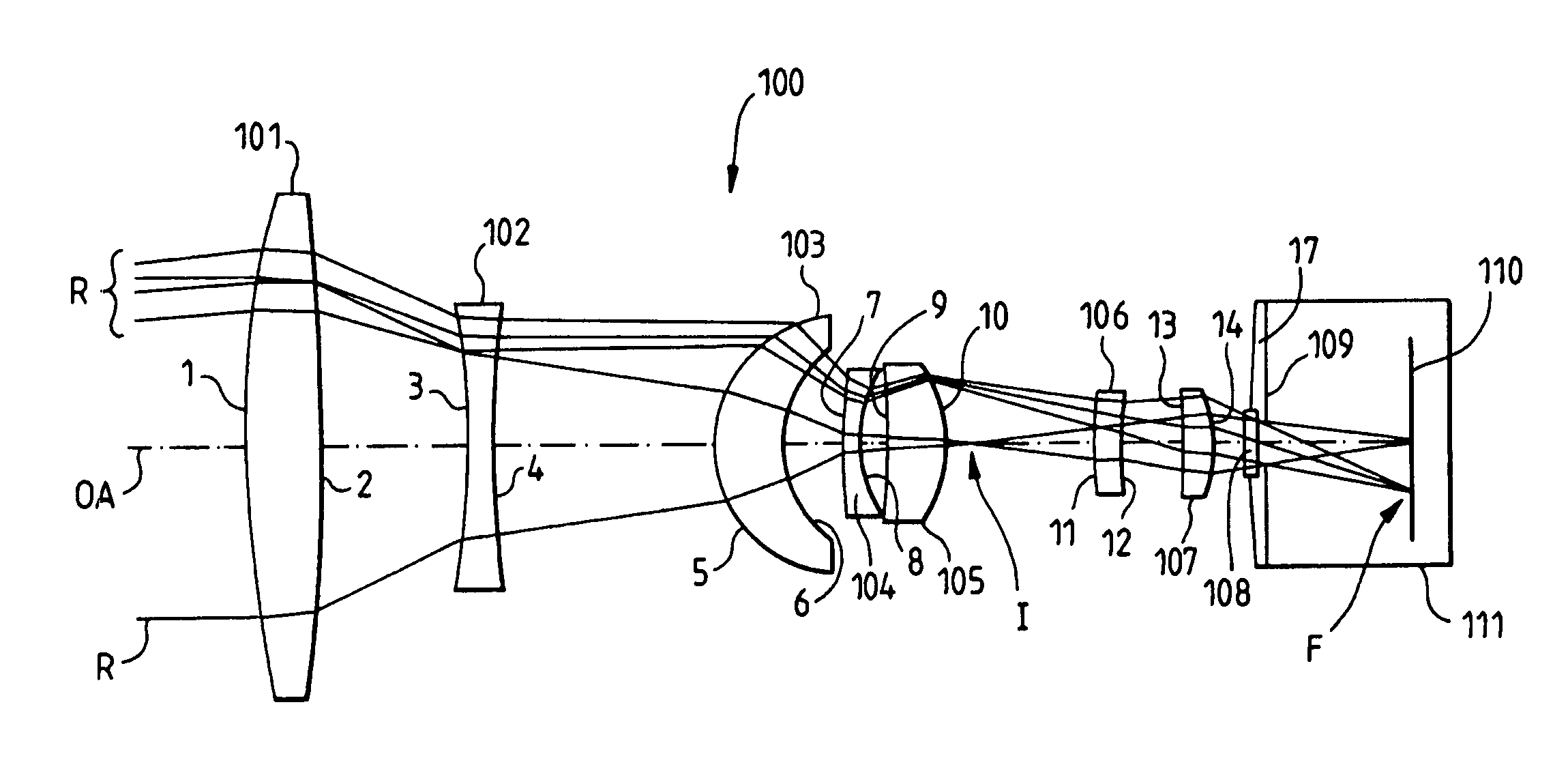Optical apparatus
a technology of optical imaging and optical components, applied in the field of optical imaging apparatus, can solve the problems of unsuitable, unsuitable, unacceptably large diameter of the front elements of simple existing optical apparatus, and achieve the effect of less sensitive to manufacturing tolerances, high optical manufacturing tolerances, and typical optical strength of negatively distorting lenses
- Summary
- Abstract
- Description
- Claims
- Application Information
AI Technical Summary
Benefits of technology
Problems solved by technology
Method used
Image
Examples
first embodiment
[0050]FIG. 1 illustrates the present invention in which the optical apparatus, generally denoted 100, is an infra-red imaging apparatus and operates in the 4.0–5.0 μm infra-red waveband. The apparatus 100 comprises an objective lens system in the form of an optical train of lens elements arranged along a common optical axis OA, and consisting of a first (i.e. leftmost in FIG. 1) lens element 101, three successive intermediate lens elements 102, 103 and 104, and a terminal lens element 105. Following this train of objective lens elements, and on the optical axis OA, is a train of relay lens elements consisting of a first relay lens element 106, and a terminal relay lens element 107. A dewar 111 is placed on optical axis OA beyond the terminal lens element 107. The dewar has a window 108 and houses an aperture stop 109 and an electronic infra-red image detector 110. The dewar assembly is cooled by a suitable means (not shown) which cools both the detector 110 and the aperture stop 109...
second embodiment
[0068]the present invention, as illustrated in FIG. 2, may provide an optical design which is less sensitive to tolerances and may provide an even greater level of distortion.
[0069]Referring to FIG. 2, there is shown an optical apparatus 200 having a three element objective lens system having a first lens element 201 with a spherical front surface 1′, and a flat rear surface 2′. The second lens element 202 carries a spherical surface 3′ and an aspheric surface 4′, while the terminal lens element 203 of the objective system carries a spherical surface 5′ and an aspheric surface 6′. This objective lens system is arranged to form an intermediate image I after the terminal lens element 203, the intermediate image being substantially negatively (“barrel”) distorted principally by the terminal objective lens element.
[0070]A three element relay lens system is then provided in the optical train of the apparatus by relay lens elements 204, 205 and 208. The relay lens system begins immediate...
PUM
 Login to View More
Login to View More Abstract
Description
Claims
Application Information
 Login to View More
Login to View More - R&D
- Intellectual Property
- Life Sciences
- Materials
- Tech Scout
- Unparalleled Data Quality
- Higher Quality Content
- 60% Fewer Hallucinations
Browse by: Latest US Patents, China's latest patents, Technical Efficacy Thesaurus, Application Domain, Technology Topic, Popular Technical Reports.
© 2025 PatSnap. All rights reserved.Legal|Privacy policy|Modern Slavery Act Transparency Statement|Sitemap|About US| Contact US: help@patsnap.com



